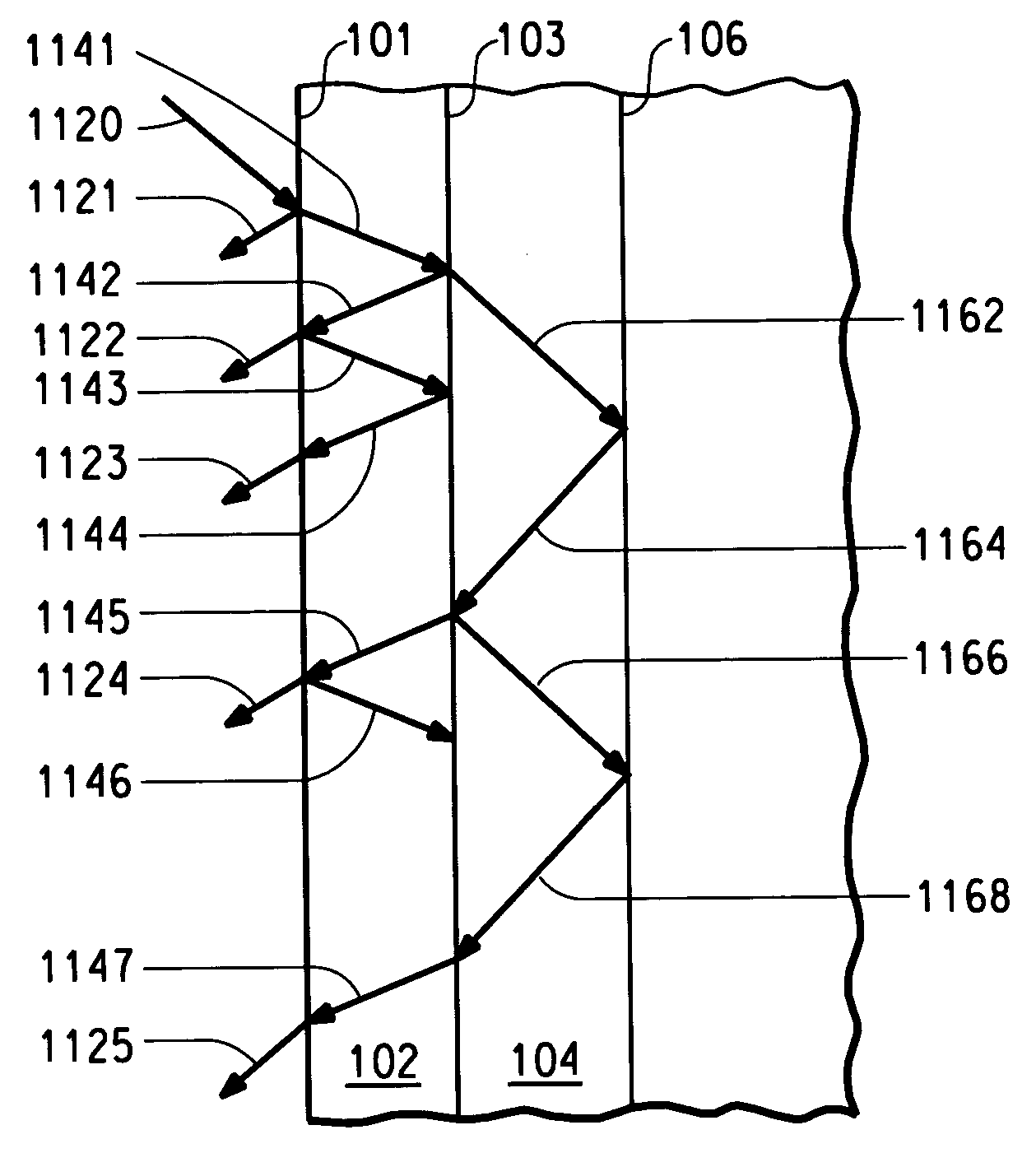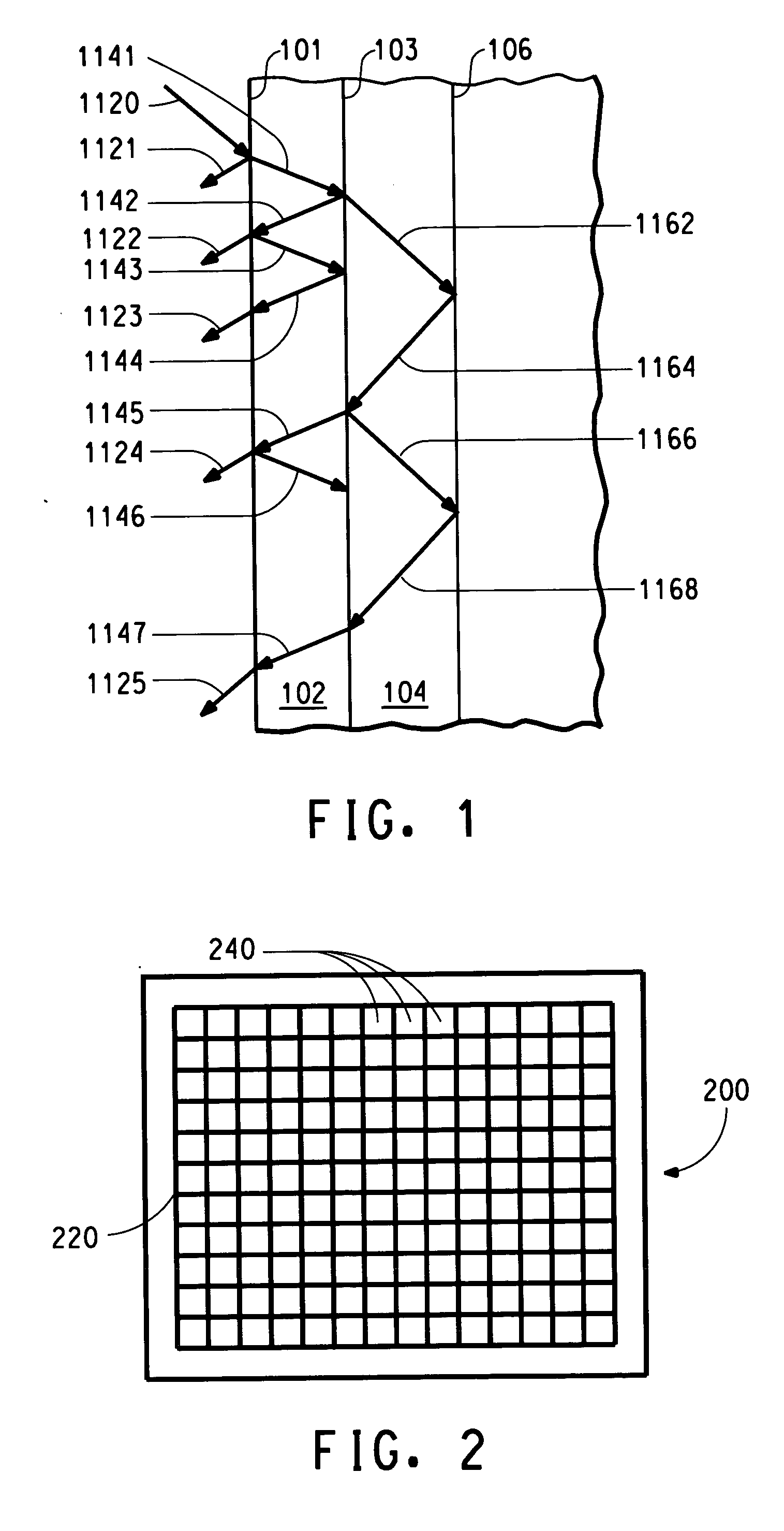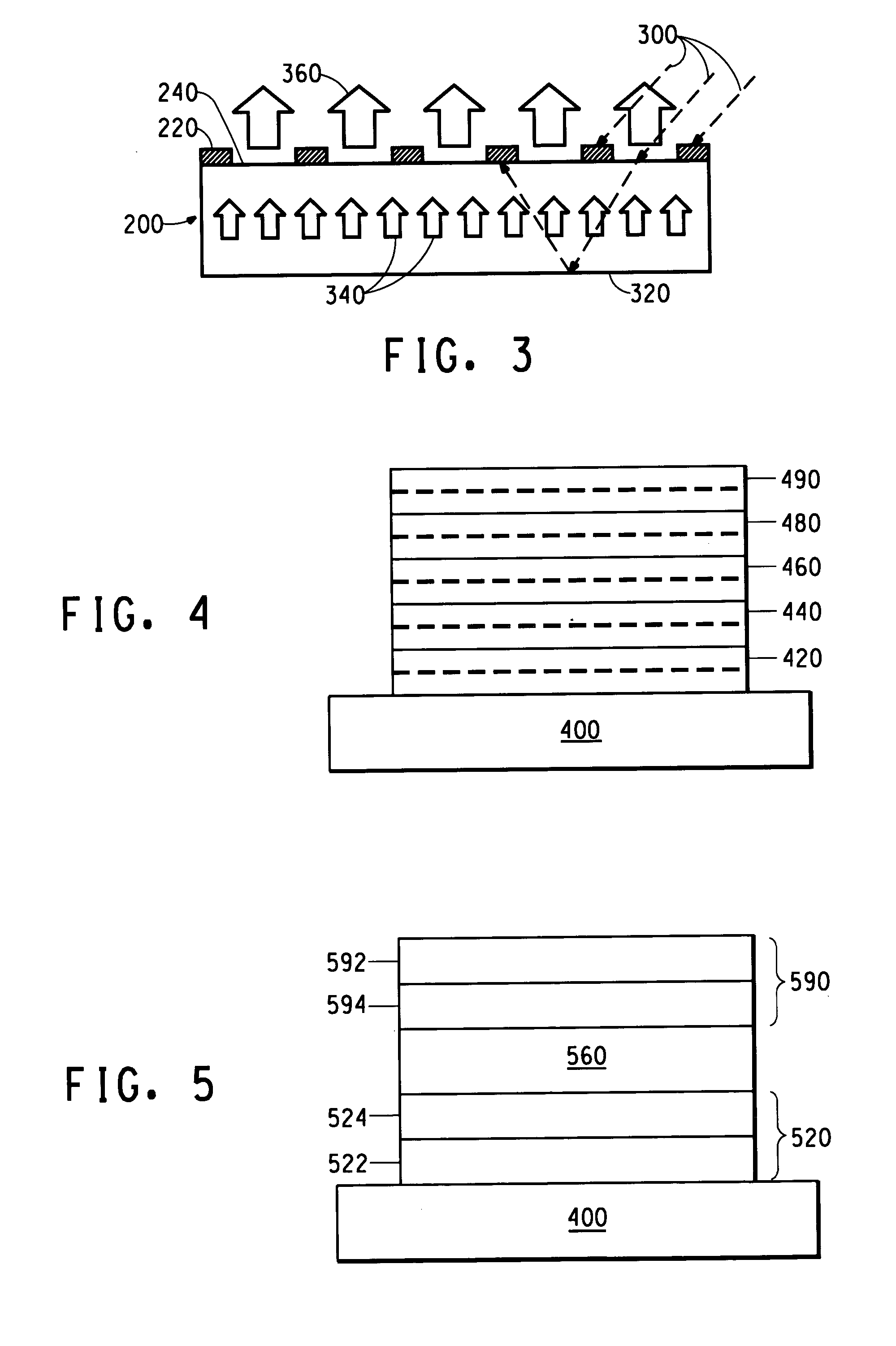Organic electronic device having low background luminescence
a technology of electronic devices and background luminescence, which is applied in the direction of discharge tube luminescnet screens, discharge tube/lamp details, electric discharge lamps, etc., can solve the problems of increasing module thickness and cost, poor readability or low contrast of electronic devices in lighted environments, and poor cost effect, so as to achieve low reflectivity and cost
- Summary
- Abstract
- Description
- Claims
- Application Information
AI Technical Summary
Benefits of technology
Problems solved by technology
Method used
Image
Examples
example 1
Example 1 illustrates that a high-contrast display can be obtained with a black first electrode in an OLED display without using a polarizer. It also demonstrates that the ambient light may be partially eliminated by tuning the optical length (the thicknesses of the polymer layers) of the OLEDs.
OLEDs with a black first electrode can be fabricated following a similar procedure described previously in this specification. Glass may be used as a substrate. In each of glass / (Cr and CrxOy) / ITO, glass / (Ta and TaxOy) / ITO, and glass / Si combinations, the (Cr and CrxOy) / ITO, (Ta and TaxOy) / ITO, or Si are used as the first electrode contact. The layers over the glass can be prepared by thermal evaporation, metalorganic chemical vapor deposition or plasma-enhanced chemical vapor deposition. The reflectivity or absorbance of the first electrode can be adjusted by changing the thickness(es) of Cr, Ta, or Si to achieve a light absorbance less than approximately 10%. A thin, transparent polyanili...
example 2
Example 2 demonstrates that high contrast can be obtained using a black second electrode in an OLED without using a polarizer. It also demonstrates that the ambient light can be partially eliminated by tuning the optical length (the thickness of the polymer layers) of the OLED. A contrast ratio of 50:1 may be obtained in an ITO / PANI / PPV / Ba (2 nm) / Al (10 nm) / Cr (200 nm) device.
OLEDs having black second electrodes may be fabricated following a similar procedure as described in Example 1 except as noted. The thickness of the organic active layer can be in a range of approximately 70-80 nm. The optical length of an OLED was varied by the thickness of transparent polyaniline layer. Ba / Al / Cr is used as the second electrode material with thicknesses of approximately 2 nm, 10 nm, and 200 nm, respectively.
Its performance is compared to a device with a traditional structure (no low-reflectivity layers). The contrast ratio of the OLED with the black second electrode (OLED layers include I...
example 3
Example 3 demonstrates that the low-reflectivity layers can be used in radiation transparent OLEDs. A transparent OLED can include a structure of ITO / PANI / PPV / Ba (2 nm) / Al (10 nm) / Au (25 nm) or ITO / PANI / PPV / Ba (2 nm) / Al (10 nm) / ITO (200 nm).
Its performance is compared to a device having a relatively thicker aluminum second electrode (ITO / PANI / OAL / Ba (2 nm) / Al (500 nm), where “OAL” is an organic active layer. These devices are over 80% transparent from 400 to 700 nm using ITO as electrodes. These devices can be used for top emission devices made over an opaque substrate, such as a silicon chip or a thick metal layer. A contrast ratio of approximately 50:1 can be obtained in a device having the first composition. In comparison, the CR of an OLED with a thick Al second electrode can be approximately 15.
High contrast devices can be made with a black layer (conductive or non-conductive) over or underneath an ITO layer. For example, an OLED may have a structure of ITO / PANI / OAL / Ba (2 ...
PUM
 Login to View More
Login to View More Abstract
Description
Claims
Application Information
 Login to View More
Login to View More - R&D
- Intellectual Property
- Life Sciences
- Materials
- Tech Scout
- Unparalleled Data Quality
- Higher Quality Content
- 60% Fewer Hallucinations
Browse by: Latest US Patents, China's latest patents, Technical Efficacy Thesaurus, Application Domain, Technology Topic, Popular Technical Reports.
© 2025 PatSnap. All rights reserved.Legal|Privacy policy|Modern Slavery Act Transparency Statement|Sitemap|About US| Contact US: help@patsnap.com



